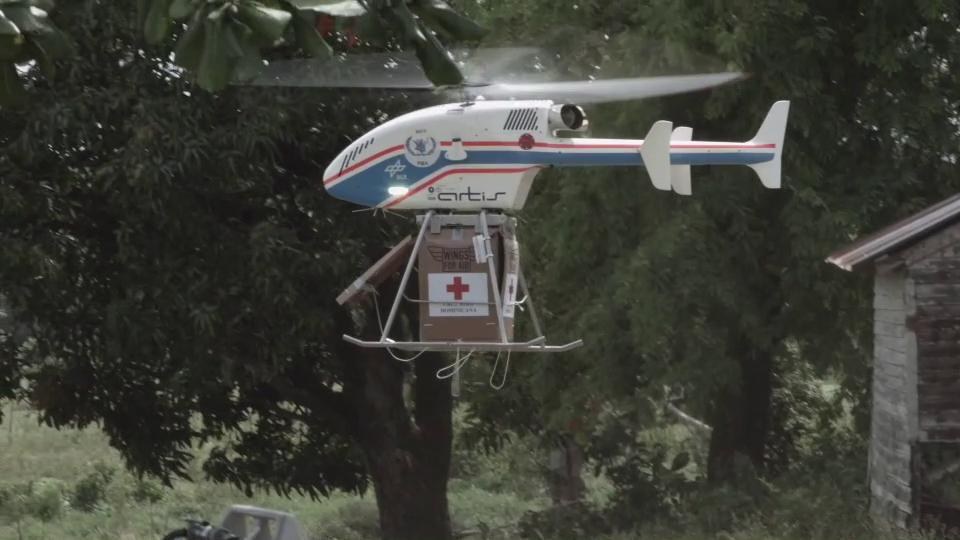Unmanned DLR helicopter superARTIS successfully accomplishes humanitarian mission
- DLR, Wings for Aid and the United Nations World Food Programme carried out various missions in the Dominican Republic
- During several flights superARTIS delivered cardboard boxes filled with humanitarian supplies
- Unmanned DLR helicopter superARTIS carried out all missions successfully
- Focus: Aeronautics, UAS
Transporting humanitarian supplies with an unmanned helicopter to hard-to-reach areas was the goal of a two-week mission by the German Aerospace Center (Deutsches Zentrum für Luf- und Raumfaht; DLR) in the Dominican Republic. Together with the Dutch organisation Wings for Aid and the United Nations World Food Programme (WFP), the researchers carried out various missions under realistic operating conditions. The unmanned helicopter superARTIS (Autonomous Rotorcraft Testbed for Intelligent Systems) delivered innovative cardboard boxes filled with humanitarian supplies.
In several flights, the project team tested the delivery concept, which uses a specially-developed disposable cardboard box, which is dropped from the aircraft at the destination. The boxes are inexpensive to manufacture and biodegradable. As a box is released, its side surfaces open to slow down and stabilise the fall. "The aim of the missions in the Dominican Republic is to demonstrate the feasibility of our concept on site and to gather data, which we can take into account in the further development of humanitarian technology of unmanned aircraft," explains DLR project lead Johann Dauer. "But it is also about determining the acceptance of the population and the authorities responsible for emergency response who accompanied our work."
superARTIS delivered humanitarian supplies in hard-to-reach areas
For this reason, the flights of the unmanned helicopter took place in various regions of the Dominican Republic. These areas have been affected by flooding in the past, cutting off the supply route to the local communities. Here, the researchers simulated an emergency scenario: The unmanned helicopter flew automatically over the salt lake Enriquillo over a distance of six kilometres. superARTIS was equipped with 20 kilograms of food supplies, such as High Energy Biscuits (HEB) and the dietary supplement Progresina, which were deployed safely and without damage on the other side of the lake. Several additional missions were performed in the area Bajo Yuna, in the northern part of the island.
The flight tests were a great success for the project team: "We were able to carry out all missions successfully and safely," says Dauer. "The feedback from the population and the humanitarian aid organisations involved was very positive." Next, the scientists will investigate how this new supply method can be integrated into the existing logistics of humanitarian aid, and in which specific cases it complements or improves existing solutions. The project as such is part of a larger innovation roadmap that has been developed with the help of the WFP Innovation Accelerators in Munich.
The application for approval was based on the novel concepts of the Joint Authorities for Rulemaking on Unmanned Systems (JARUS), the so-called SORA (Specific Operation Risk Assessment). In contrast to classic certification methods, which prove the safety of an aircraft for general operation, SORA focuses on the specific application of the unmanned aircraft. It assesses the risk posed by the specific use case and determines the appropriate measures to ensure the safety of this application. The approval of the Missions in the Dominican Republic is one of the first practical applications of this process.



